AI Conversion Rate Optimization for E-commerce: Detailed Guide [2024]
If you are interested in using AI to improve the conversion rate of your online store, this complete guide is for you.
TL;DR
- AI is used to improve the conversion rate of e-commerce stores. It can analyze large amounts of customer data, perform A/B tests, and personalize the customer experience.
- The main benefits of using AI for e-commerce are the enhanced personalization capabilities that machine learning offers, the ability to experiment at scale with different landing pages and offers, and the ability to predict customer behavior.
- Online stores use AI for e-commerce to optimize conversion rates by setting up a conversational experience, a semantic site search, conducting A/B tests, adding personalized product recommendations, and setting up smart pop-ups.
How is AI used for Conversion Rate Optimization in E-commerce?
AI is used in e-commerce for conversion rate optimization (CRO) for:
- Analyzing large amounts of customer data.
- Generating new ideas.
- Making data-driven decisions.
- A/B testing and evaluating results.
- Improving and personalizing the customer experience.
AI can enhance the customer shopping experience and drive higher conversion rates by leveraging advanced algorithms, data analytics, and predictive analysis.
The conversion rate optimization tools use machine learning and predictive analytics to analyze user behavior and purchasing behavior to improve and personalize their experience, increasing the conversion rate.
Traditionally, the main challenges of CRO have been analyzing customer data at scale and conducting many experiments to test out different things.
However, with the surge of AI technology, retailers are now able to improve their conversion rates with:
- Analyzing the Conversion Funnel: AI technology can process large amounts of numerical data, as it can pinpoint drop-off points and bottlenecks.

Here's an example from Big Sur AI’s (our tool) Merchant Insights, which shows customer drop-off points in their buying cycle.
- Predictive Analytics: Use historical data to predict future actions and purchases, such as what products customers are most likely to buy or questions to have in mind.
- A/B Testing Campaigns: AI uses machine learning (ML) to test multiple variables on a website to determine what option works better for your brand - and it can do it at scale.
On top of that, AI is used to reduce manual effort.
Instead of manually creating campaigns or conversing with customers, AI tools can do that for you to improve your CRO.
In the next sections, we’ll cover the main benefits of using AI for CRO and then proceed to cover a few use cases with real-life examples.
What Are the Benefits of Using AI for Conversion Rate Optimization in E-commerce?
Here are the top 3 benefits of using AI for CRO in e-commerce for online stores:
#1: Enhanced Personalization
AI technology can help your online store improve CRO by delivering a personalized shopping experience for each customer.
The software can leverage machine learning (ML) algorithms to segment customers based on their preferences, browsing history, and purchase patterns.
This lets your brand:
- Offer personalized product recommendations.
- Set up a personalized site search on your store.
- Configure large-scale email campaigns.
- Customize the website’s content for each visitor (e.g., home page).
For example, Wyze is using Big Sur AI’s personalized product recommendations to improve their store’s conversion rate.

#2: Experiment at Scale
AI lets you A/B test and conduct different experiments at scale to determine which version performs best.
Merchants are utilizing AI to analyze huge amounts of customer data at scale to recognize patterns that they would otherwise miss.
For example, Vegetology ran AI-powered A/B tests on their landing pages to see which of them would perform better.
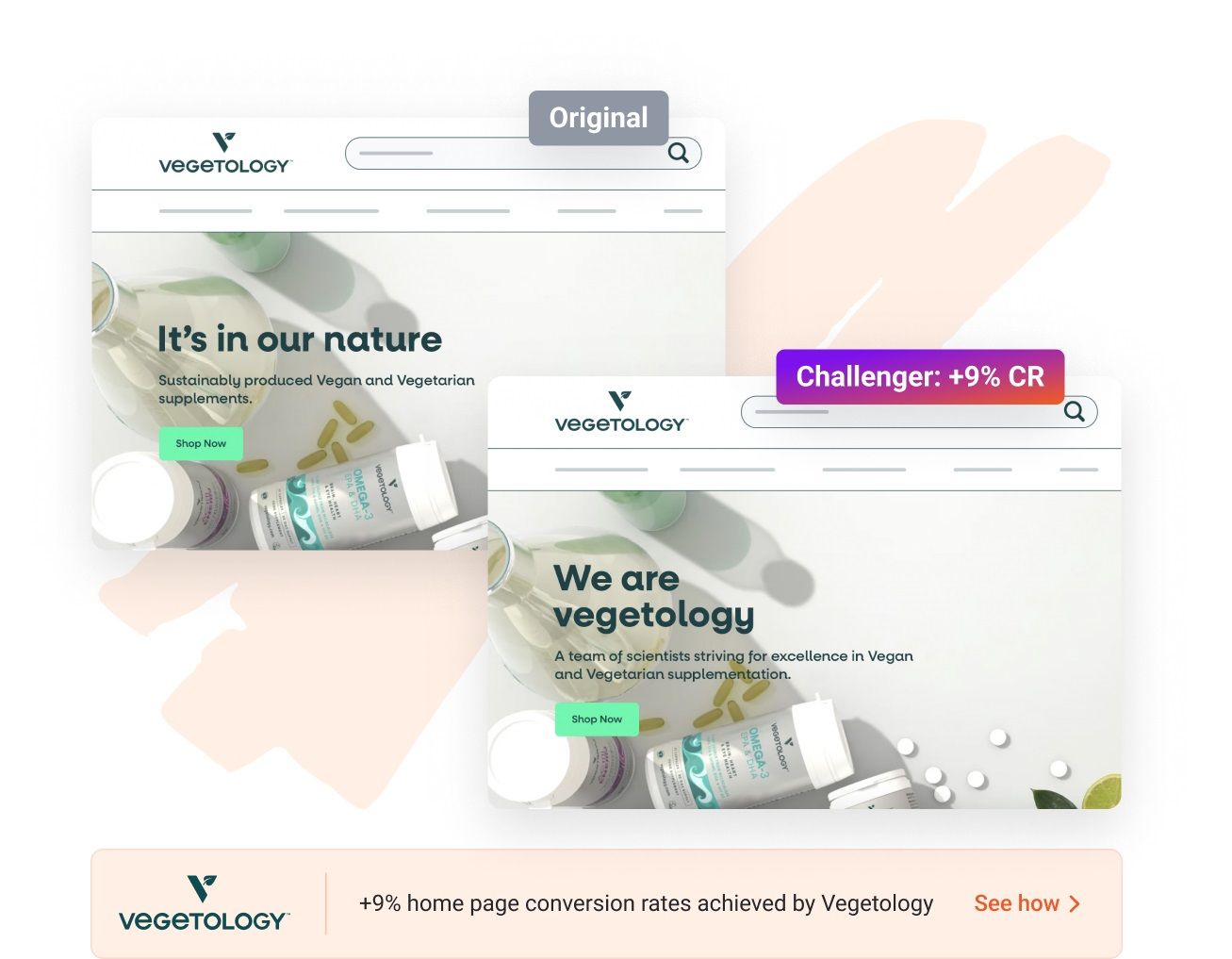
Retailers can run these rapid tests to figure out optimal:
- Headlines and overall copy.
- Website designs and creatives.
- Pricing, offers, and promotions.
- Call-to-actions (CTAs).
- Customer segments from marketing campaigns.
#3: Predicting Customer Behavior
AI can predict customer behavior with its predictive capabilities that leverage historical data to forecast future actions.
An example of such a tool is Nosto, which utilizes behavioral and transactional data combined with Predictive AI to make AI product recommendations based on what each customer is likely to purchase next.
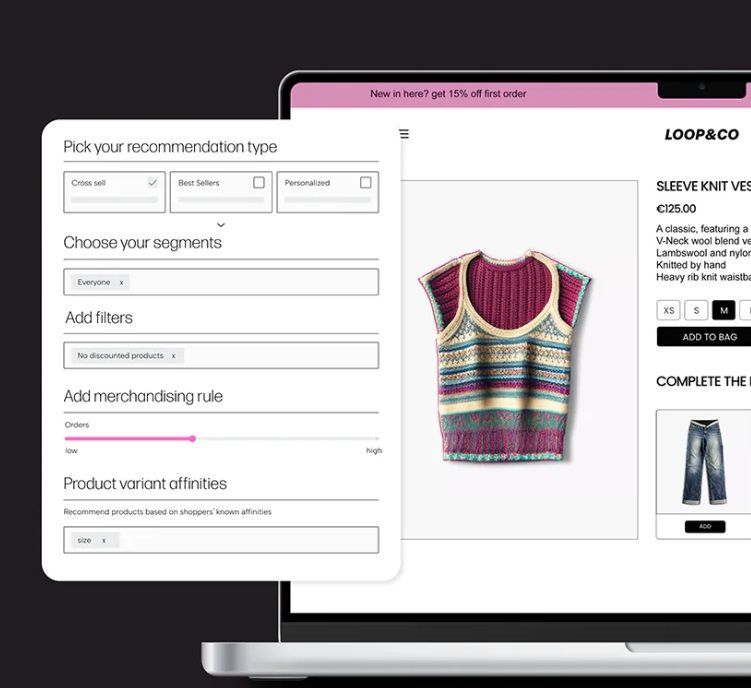
The tool’s product recommendations are based on customer insights gathered in real-time, and they refresh every 90 seconds.
Apart from targeted product recommendations, AI can predict when customers are going to drop off at a specific step.
This lets retailers automatically offer a discount or offer more information as part of the buying journey to increase the likelihood of making a sale.
What Are The Different Ways Of Using AI For Improving The Conversion Rate in Your Online Store?
There are different ways of improving your store’s conversion rate with AI-powered tools.
All CRO tools have something in common: they all aim to improve user experience.
Here are the top 5 ways of using AI for CRO in e-commerce:
#1: Setting up a Conversational Experience in Your Store
You can bring a conversational experience to your store that guides your customers to the right products and answers their questions with Big Sur’s AI Sales Agent.
Shoppers can ask the AI assistant contextual questions about your products from anywhere on your site.
Here’s an example from Rad Power Bikes when asking the AI sales agent to compare 2 different e-bikes ⤵️
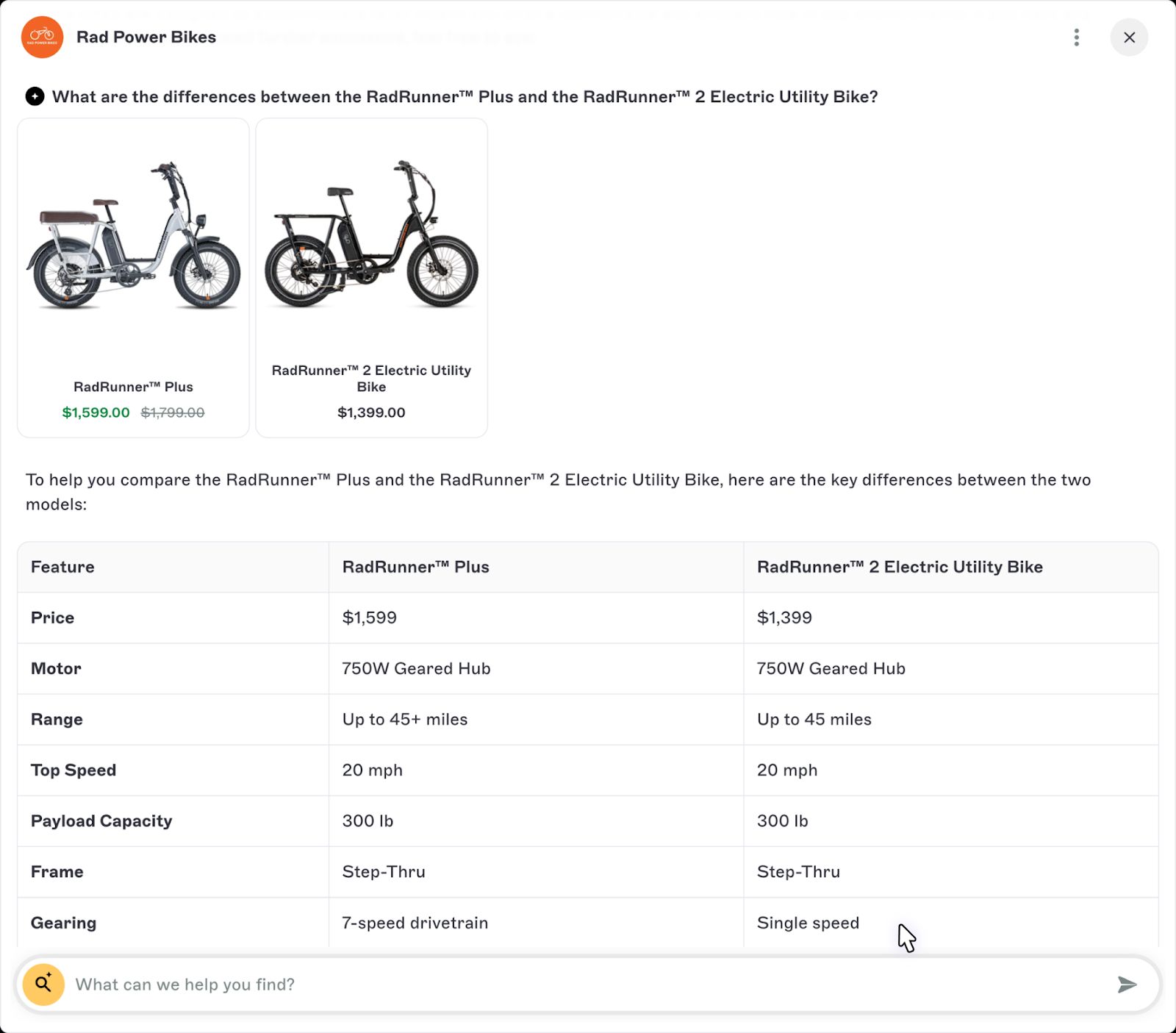
The AI assistant is trained to provide personalized answers based on the information about your products, site content, and each customer’s engagement with your store.
The tool's advice has been optimized for conversions, providing relevant recommendations and proposing follow-up questions on a data-driven basis on what would likely lead to a conversion.
You can set up a chat-based assistant like Big Sur AI to provide 24/7 real-time support to prospective customers to recreate the in-store shopping assistant experience.
#2: Personalizing The Product Discovery Experience Via Site Search
You can improve your store’s conversion rate by setting up an AI-powered personalized site search.
Tools like Bloomreach combine first-party customer data alongside predictive analytics to suggest relevant product recommendations in its semantic search.
When your customers are searching on your site search, the search engine recommends them products based on their shopping journey and purchase behavior.
For example, Level Nine Sports improved its conversion rate by 23.39% by utilizing Bloomreach’s personalized site search.

The brand transformed its product discovery experience for its shoppers, enabling AI-driven optimization for specific product searches and synonym recognition.
This implementation also enhanced inventory utilization by promoting niche items, allowing the company to clear out old stock.
💡Statistics show that 39% of consumers are influenced by a relevant search result.
#3: Adding AI-Powered Product Recommendations
Merchants use AI to improve conversion rates with AI product recommendations.
When customers go to conventional stores, they are shown generic product recommendations, such as ‘’frequently bought together’’ and ‘’most purchased products overall’’.
AI is re-inventing how product recommendations are done, as they can improve your store’s conversion rate by personalizing them to each shopper.
Product recommendation software like Big Sur AI makes contextual product recommendations based on:
- Your customers’ engagement with your online store, such as pages browsed and transactional history.
- Information that was gathered through the conversational experience with the AI sales agent.
- The questions asked by the customers.
Big Sur AI's product recommendations are broken into three modules, shown to consumers according to the page they’re on and how they got there:
- Picked just for you: A selection of products that a customer is most likely to buy based on what the software knows about them.
- Frequently bought together: These recommendations appear once your shoppers add a product to their cart. This module features other products that customers typically buy based on their previous site activity.
- Top sellers: We show the bestsellers in the same product category as the product your shoppers are considering.
The tool shows items based on the customers' gathered information and not generic recommendations.
Here’s what the product recommendations look like on the Wyze store ⤵️
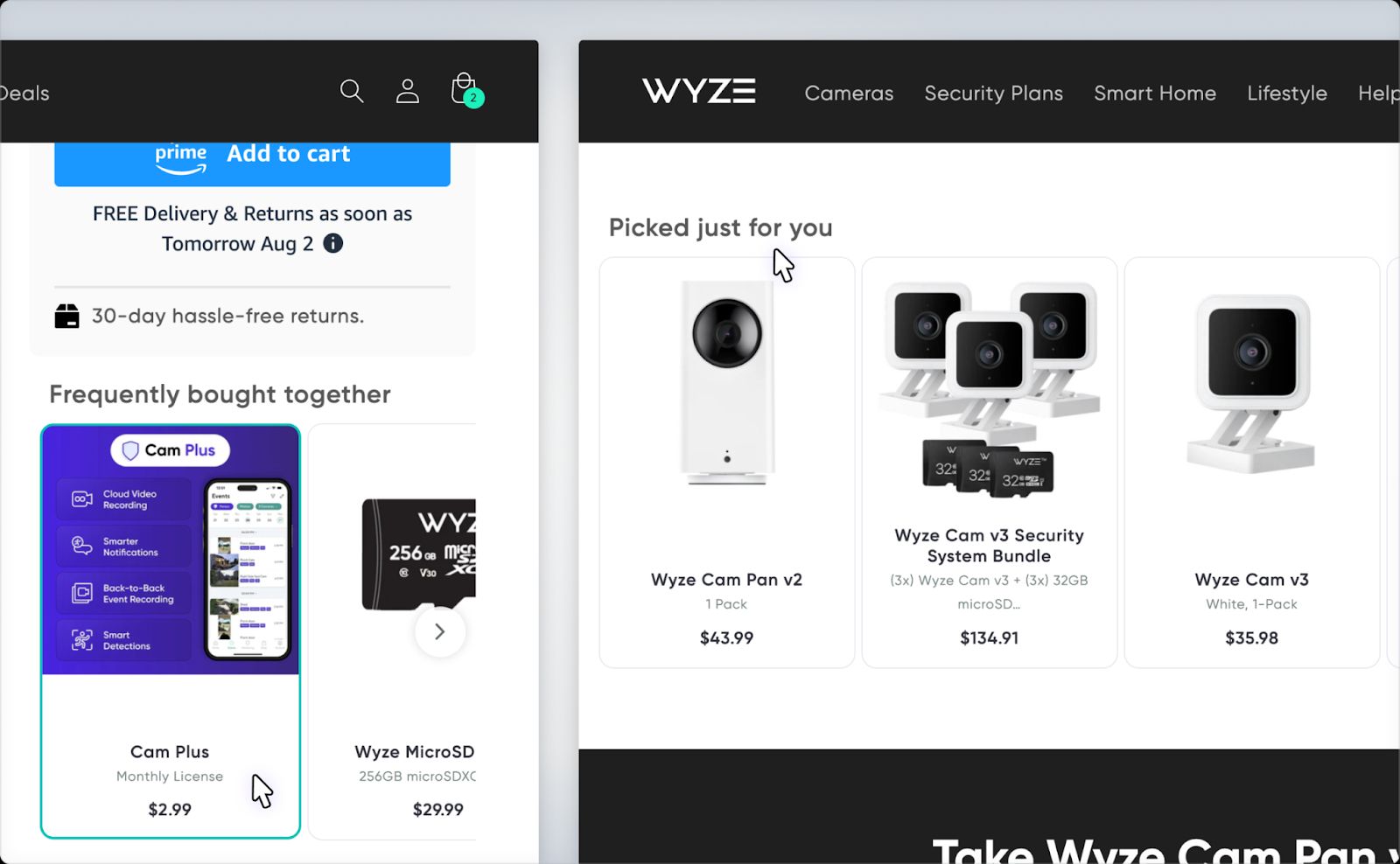
Shoppers receive these product suggestions on your product pages or during a conversation with the AI Sales Agent, increasing your sales volume.
#4: A/B Testing Feedback Mechanisms
Retailers can use AI-powered A/B testing feedback mechanisms that incorporate user feedback to make continuous improvements in their stores.
AI can A/B test for you:
- Website layouts and designs.
- Different product offerings.
- Product prices (dynamic pricing) and discounts.
The technology figures out what has the biggest impact on your conversion rates and continues with the next test.
An example of such a tool is Optimizely which offers multivariate testing that lets you test different marketing hypotheses.
DeWalt used Optimizely to test out different CTAs and navigation menus to see which ones increase conversions.
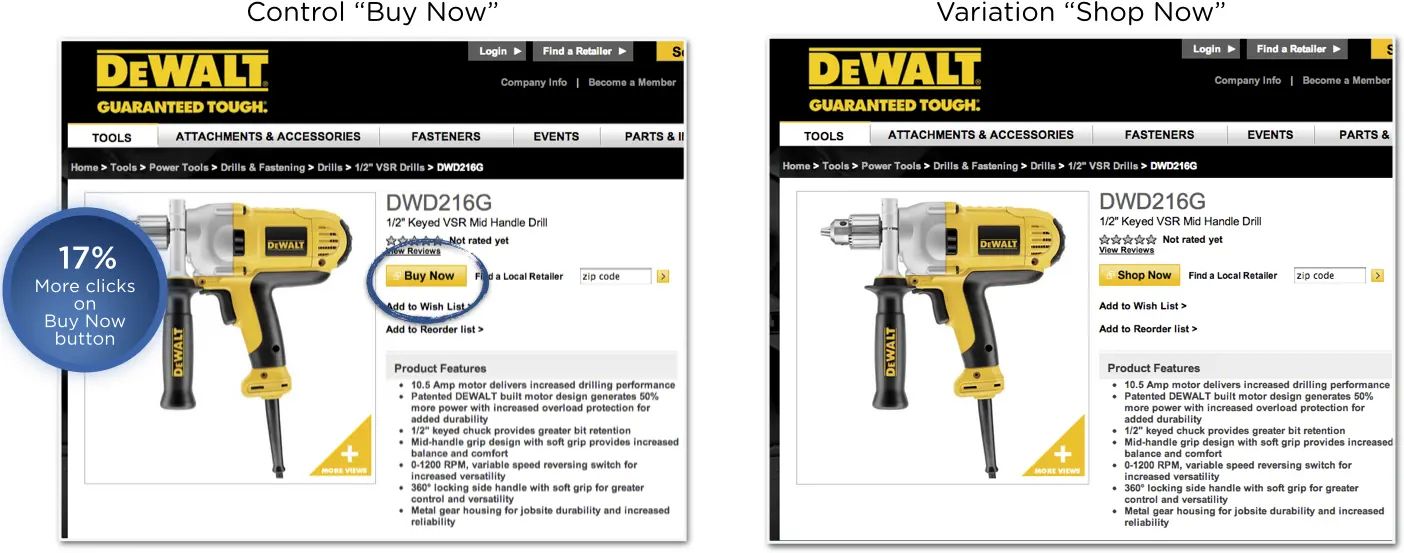
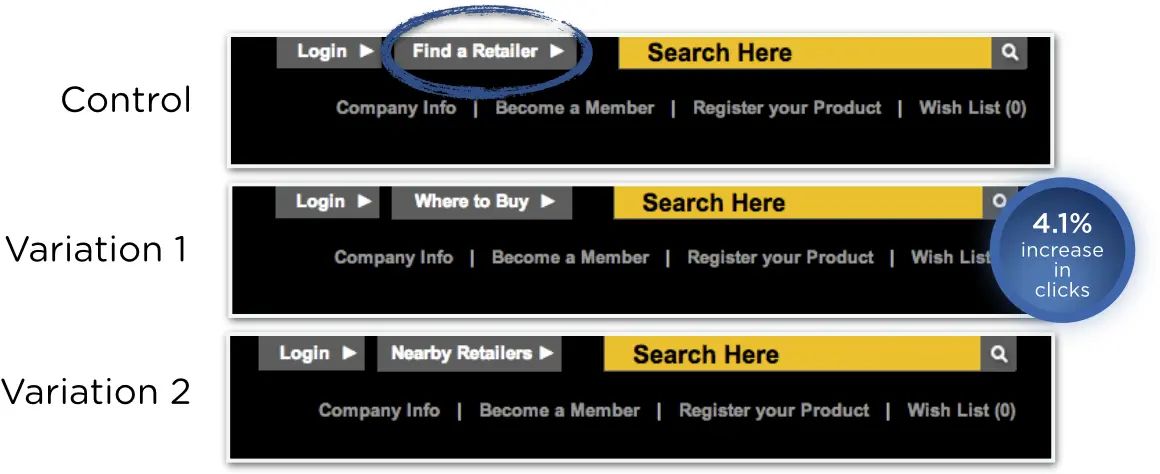
#5: Smart Pop-Ups & Offers
You can set up AI-powered smart pop-ups and custom offers on your website to increase your conversion rate.
AI technology uses your shoppers' demographics, interests, and on-site behavior to show targeted pop-ups.
These tools show smart pop-ups and offers to the right people at the right time of their shopping journey.
For example, Subminimal used Personizely to improve their conversion rates by up to 10% by experimenting with smart pop-ups and offers.
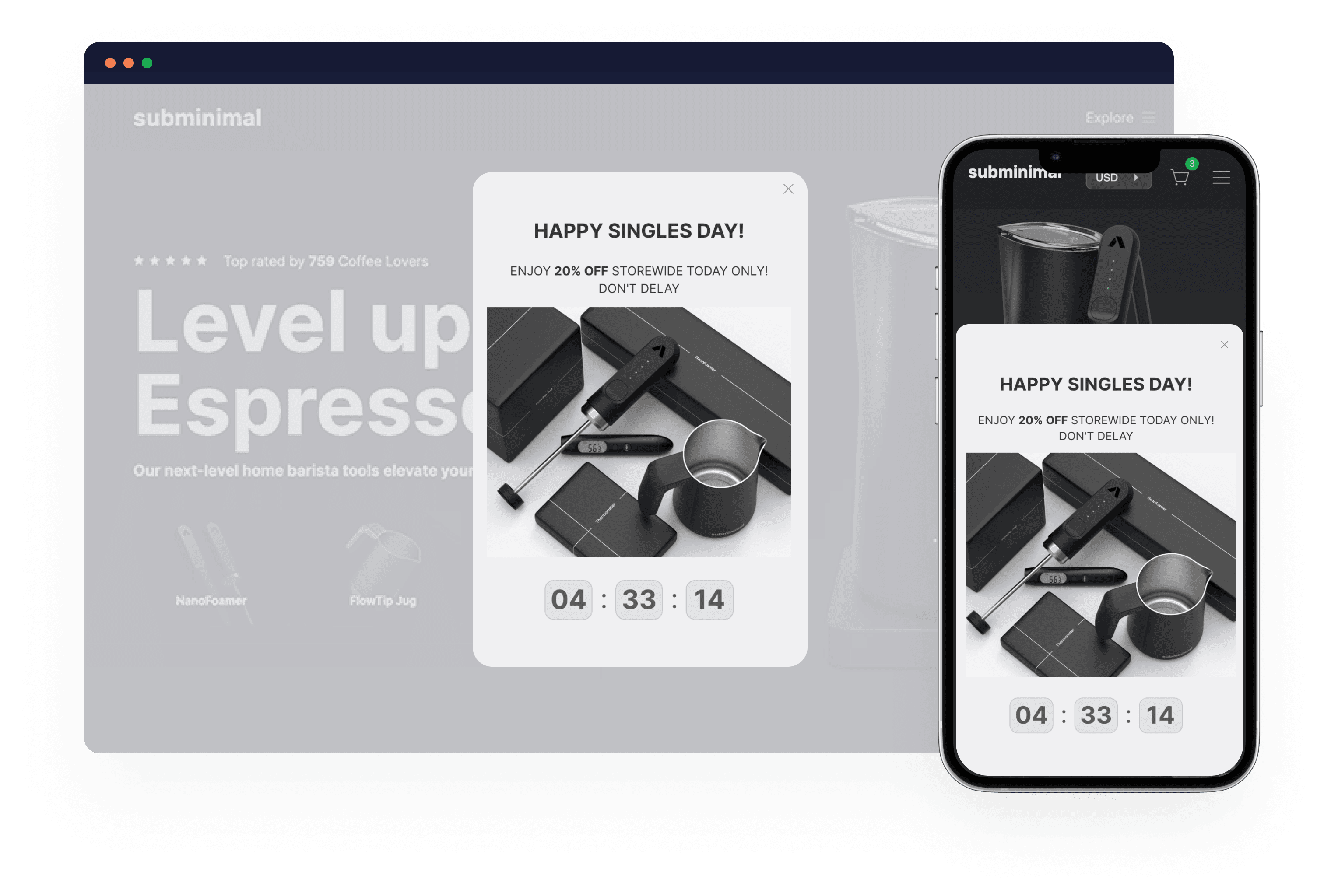
The challenge was proper customer segmentation so they could target shoppers with personalized offers (e.g., Singles Day instead of Valentine’s Day).
Powered by AI, the brand was able to test out different smart pop-ups and offers that combined consumer information and on-site behavior.
How to Use AI To Optimize Your Store’s Conversion Rate?
To get started, you’d need to configure whichever AI tool you are planning on using and feed it with customer and/or product information.
The more information the algorithms have, the more precise targeting they will have when it comes to recommendations or site searches.
Since some tools are heavy, setup and development costs are required, with software costing up to a few thousand dollars and a month or two to get it up and running.
For smart pop-ups and product recommendations, most tools are ‘’DIY’’, where you can customize and edit the recommendations or pop-ups yourself.
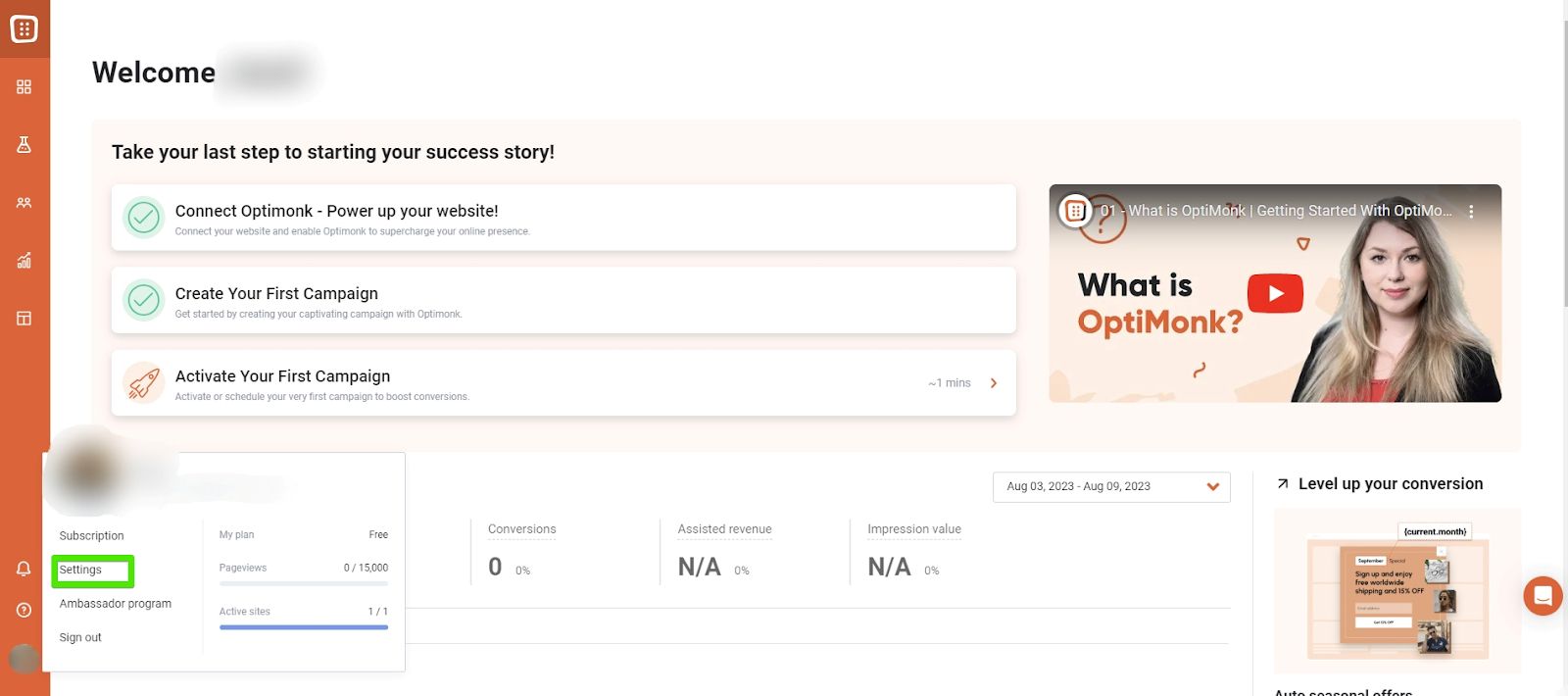
You can also combine two AI tools at the same time for maximum effect.
💡For example, you can combine Big Sur AI with Klaviyo (email marketing platform).
➡️ Our tool integrates with Klaviyo to enable merchants to provide topic lists, and when the AI sales agent converses about these topics with your shoppers, events are sent to Klaviyo for customer ID filtering.
➡️ This would enable you to create targeted email campaigns for customers who are interested in these topics, such as sending a curated list of the best hiking shoes with a discount code.
The quickest way to increase your conversion rate with AI is by incorporating a tool like Big Sur AI into your e-commerce store.

Here’s why e-commerce brands love Big Sur AI:
- 24/7 Real-Time Assistance: The AI Sales Agent helps your shoppers find the right product for their needs without relying on human agents.
- Customized to your online store: You control the AI experience, as the software has been fed and trained with your store’s information.
- Optimized for conversions: Our tool's advice has been designed to provide relevant recommendations and propose follow-up questions based on data on what would most likely lead to a conversion.
- Conversational experience: Your shoppers can talk to our AI Agent as if they were messaging a human.
The tool is compatible with all e-commerce CMS and can be integrated into Shopify in about 5 minutes.
❗Integration on other CMS platforms would take a few days and require minimum development support.
What Are The Best Conversion Rate Optimization Tools For Online Stores?
Now that you have a better idea of how AI tools can increase your store’s conversion rate, you can familiarize yourself with the best CRO tools for e-commerce stores in 2024.
Improve Your Conversion Rate With Big Sur AI
Big Sur AI is an AI-powered shopping assistant that increases conversion rates by helping shoppers find the best product for their needs.
The software achieves that via:
- Human-like conversational experience.
- Conversion-optimized AI prompts.
- Personalized product recommendations.
Here’s the AI Sales Agent in action ⤵️:
💡Customers who interact with Big Sur AI Sales Agent convert at four times the rate of the average store user.

The AI assistant can understand user intent and recommend the right product for your customers’ needs and personal attributes, such as height:

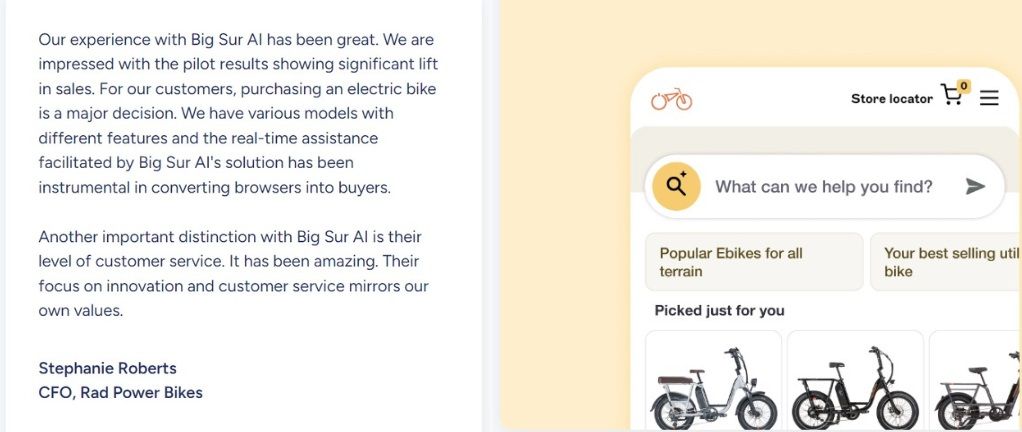
The tool also prompts your customers to start more conversations, leading to more purchases and increased basket sizes.
The sales agent analyzes how each consumer engages with your store, predicts which questions they will likely ask, and suggests them throughout their product discovery experience.
Here’s an example from Wyze ⤵️

Your brand will also get insights into the conversion rates of each question your customers ask that leads to a conversion.
This will help your marketing team identify the crucial pre-purchase questions interested customers ask.

You also gain insights into what products are frequently bought together, which can help you improve your store’s shopping experience.

Optimize your e-commerce store with a conversational experience that works 24/7 to assist your customers.
Our AI-powered Sales Agent can guide customers' shopping journey with personalized recommendations and conversion-optimized prompts.
The conversational experience helps your customers find the right product for their needs.
Be data-driven about what products are frequently bought together and what pre-purchase questions customers have on your website.


